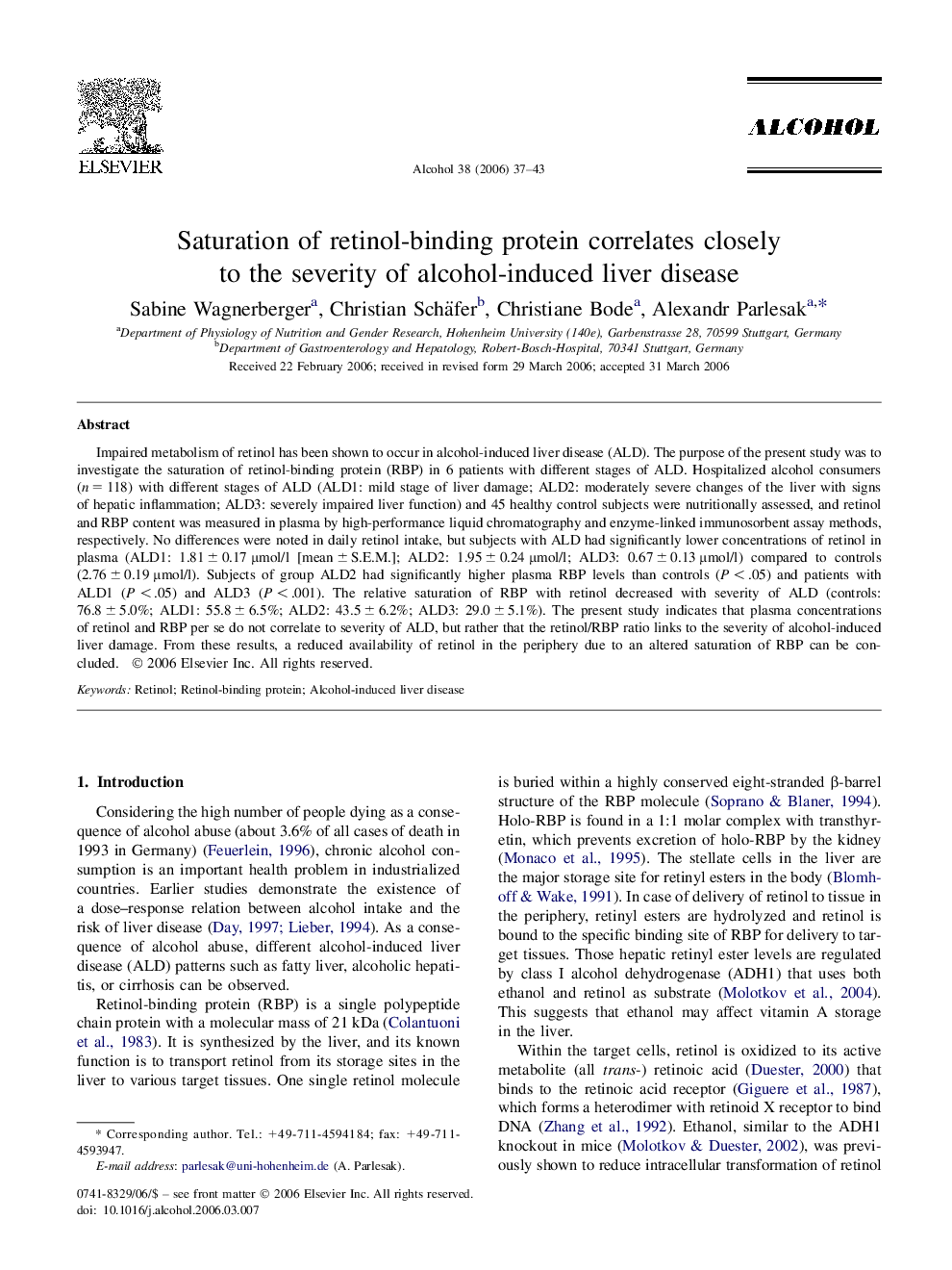| Article ID | Journal | Published Year | Pages | File Type |
|---|---|---|---|---|
| 1067706 | Alcohol | 2006 | 7 Pages |
Abstract
Impaired metabolism of retinol has been shown to occur in alcohol-induced liver disease (ALD). The purpose of the present study was to investigate the saturation of retinol-binding protein (RBP) in 6 patients with different stages of ALD. Hospitalized alcohol consumers (n = 118) with different stages of ALD (ALD1: mild stage of liver damage; ALD2: moderately severe changes of the liver with signs of hepatic inflammation; ALD3: severely impaired liver function) and 45 healthy control subjects were nutritionally assessed, and retinol and RBP content was measured in plasma by high-performance liquid chromatography and enzyme-linked immunosorbent assay methods, respectively. No differences were noted in daily retinol intake, but subjects with ALD had significantly lower concentrations of retinol in plasma (ALD1: 1.81 ± 0.17 μmol/l [mean ± S.E.M.]; ALD2: 1.95 ± 0.24 μmol/l; ALD3: 0.67 ± 0.13 μmol/l) compared to controls (2.76 ± 0.19 μmol/l). Subjects of group ALD2 had significantly higher plasma RBP levels than controls (P < .05) and patients with ALD1 (P < .05) and ALD3 (P < .001). The relative saturation of RBP with retinol decreased with severity of ALD (controls: 76.8 ± 5.0%; ALD1: 55.8 ± 6.5%; ALD2: 43.5 ± 6.2%; ALD3: 29.0 ± 5.1%). The present study indicates that plasma concentrations of retinol and RBP per se do not correlate to severity of ALD, but rather that the retinol/RBP ratio links to the severity of alcohol-induced liver damage. From these results, a reduced availability of retinol in the periphery due to an altered saturation of RBP can be concluded.
Related Topics
Life Sciences
Biochemistry, Genetics and Molecular Biology
Biochemistry
Authors
Sabine Wagnerberger, Christian Schäfer, Christiane Bode, Alexandr Parlesak,
